A sacred mountain in China that has been witness to centuries of Buddhist history was added Friday (Beijing Time) to UNESCO's World Heritage List.
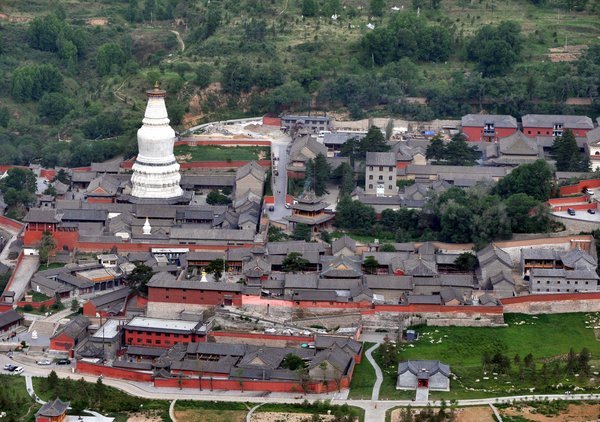
A sacred mountain in China that has been witness to centuries of Buddhist history was added Friday (Beijing Time) to UNESCO's World Heritage List during the 33rd session of the World Heritage Committee in Seville, Spain. [Photo: China Foto Press]
A sacred mountain in China that has been witness to centuries of Buddhist history was added Friday (Beijing Time) to UNESCO's World Heritage List during the 33rd session of the World Heritage Committee in Seville, Spain.
The new addition to the heritage list is Mt. Wutai ("five terrace mountain"), comprised of five continuous mountains with flat peaks at altitudes of 2,500 to 3,000 meters above sea level.
The site is in Wutai County, Xinzhou City in Shanxi Province, 230 kilometers from the provincial capital, Taiyuan City.
UNESCO said Mt. Wutai was a "sacred Buddhist mountain."
"Overall, the buildings on the site present a catalogue of the way Buddhist architecture developed and influenced palace building in China over more than a millennium," it said.
"The success is a new burden that will spur us to better protect the mountain. I feel the pressure," said Liang Yousheng, director of the Mt. Wutai Administration Bureau. Liang said he was delighted to hear the news of the UNESCO decision.
Buddhist temples on the mountain were built between the 1st century AD and the early 20th century.
Numerous Buddhist constructions, including 68 temples, 150 towers, 146,000 sculptures and many frescoes and tablet inscriptions, were preserved during thousands of years on Mt. Wutai, which witnessed the development of Buddhism in China, Liang told Xinhua.
The mountain, the highest in northern China, had been entwined with Buddhism for more than 1,600 years and appeared in many Buddhist books, Liang said.
"Mt. Wutai has been harmoniously combined with Buddhism culture, reflecting the ancient Chinese philosophy of the harmony between people and nature," said Han Jianggen, deputy secretary-general of the Wutai Mountain Buddhism Association.
Religious activities are held in most of the temples, banned in only a few of them for better protection, said Master Changqing, abbot of Wuye Temple, one of the most famed temples on the mountain. His temple receives more than 3,000 people a day.
Experts had blamed the mountain for being "too commercialized, too urbanized and too artificial," which prompted the Mt. Wutai administration to improve its protection work, he said.
The increasing population around the mountain in Taihuai Town had undermined the landscape and the religious atmosphere, said Han Ruijie, director of the world heritage office of Mt. Wutai.
It had 6,300 people in 1986. The number increased to 7,700 in 2002 but later decreased to 6,400 in 2007 thanks to the government's efforts, Han said.
Since 2006, the government pulled down many inharmonious constructions to protect the "Buddhism atmosphere," Han said.
"The mountain has become more serene after the 'pulling down', which is good for religious practice," said Jamyang Molam, director of administration of the Pusading Lamasery.
Mt. Wutai receives more than 3 million tourists annually, and the UN designation is expected to push that number higher.
The mountain had applied to be both cultural and natural heritage but only approved to be cultural landscape, said Tang Wei, director of world heritage bureau, department of cultural heritage protection and archaeology, State Administration of Cultural Heritage.
The UNESCO said Mt. Wutai was not qualified to be a world natural landscape, Tang told Xinhua Via phone, giving no more details about the rejection.
Another famed mountain in China, Mt. Songshan, also applied to become a world heritage site, but the result has not been released yet. The Shaolin Temple, which is the birthplace of Shaolin kungfu, is located on this mountain in central China's Henan Province.
As of 2008, China had listed 38 world heritage sites, including 27 cultural heritage sites, seven natural heritage sites and four cultural and natural heritage sites.
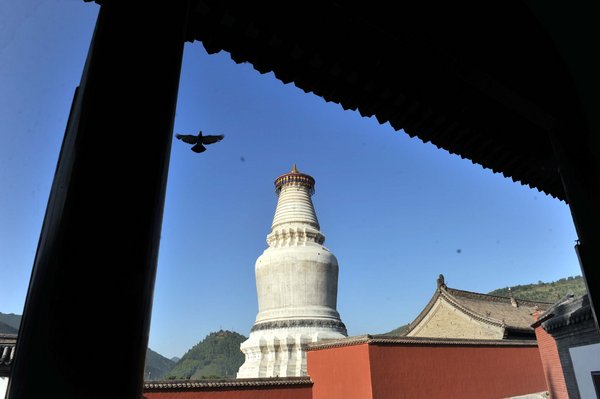
A sacred mountain in China that has been witness to centuries of Buddhist history was added Friday (Beijing Time) to UNESCO's World Heritage List during the 33rd session of the World Heritage Committee in Seville, Spain. [Photo: China Foto Press]
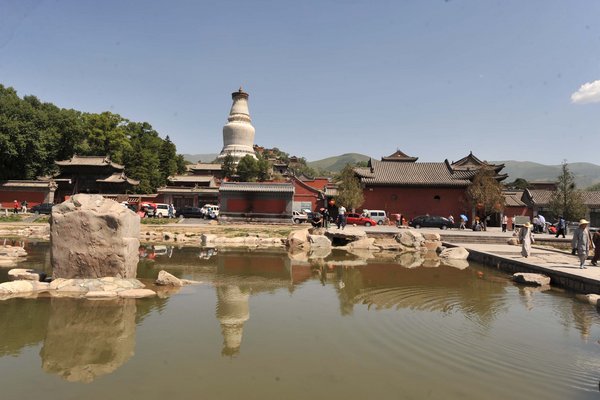
A sacred mountain in China that has been witness to centuries of Buddhist history was added Friday (Beijing Time) to UNESCO's World Heritage List during the 33rd session of the World Heritage Committee in Seville, Spain. [Photo: China Foto Press]
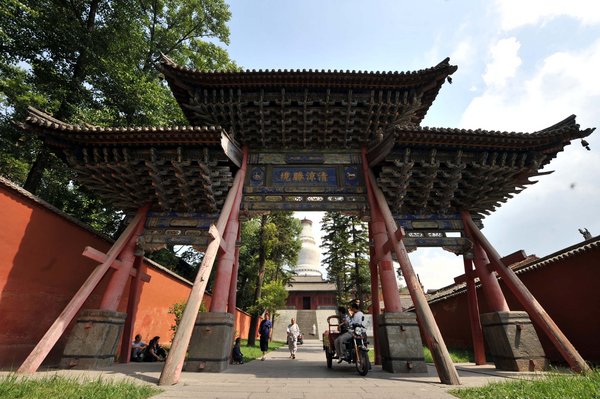
A sacred mountain in China that has been witness to centuries of Buddhist history was added Friday (Beijing Time) to UNESCO's World Heritage List during the 33rd session of the World Heritage Committee in Seville, Spain. [Photo: China Foto Press]
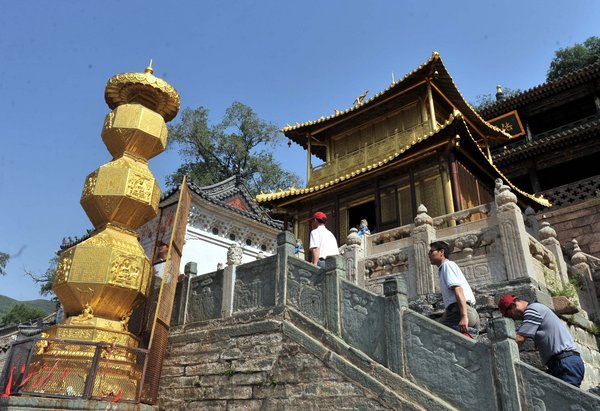
A sacred mountain in China that has been witness to centuries of Buddhist history was added Friday (Beijing Time) to UNESCO's World Heritage List during the 33rd session of the World Heritage Committee in Seville, Spain. [Photo: China Foto Press]
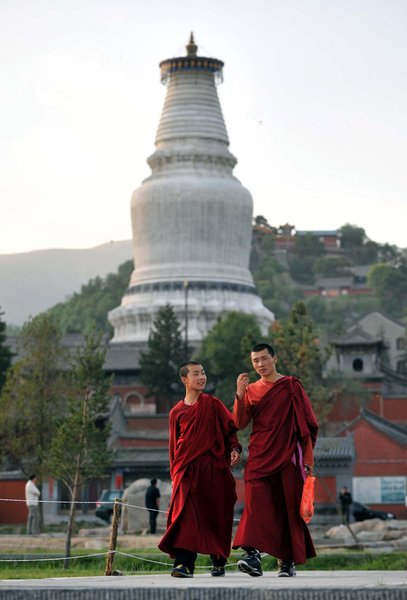
A sacred mountain in China that has been witness to centuries of Buddhist history was added Friday (Beijing Time) to UNESCO's World Heritage List during the 33rd session of the World Heritage Committee in Seville, Spain. [Photo: China Foto Press]
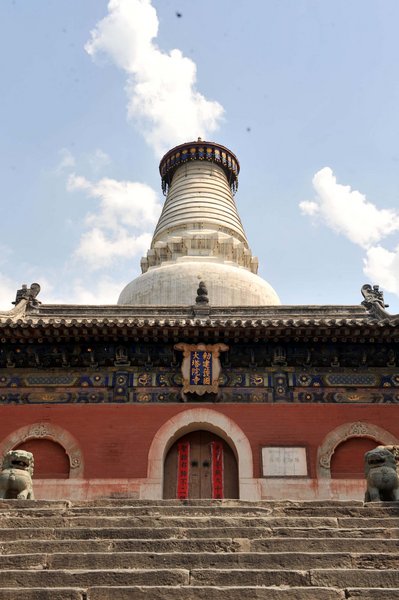
A sacred mountain in China that has been witness to centuries of Buddhist history was added Friday (Beijing Time) to UNESCO's World Heritage List during the 33rd session of the World Heritage Committee in Seville, Spain. [Photo: China Foto Press]
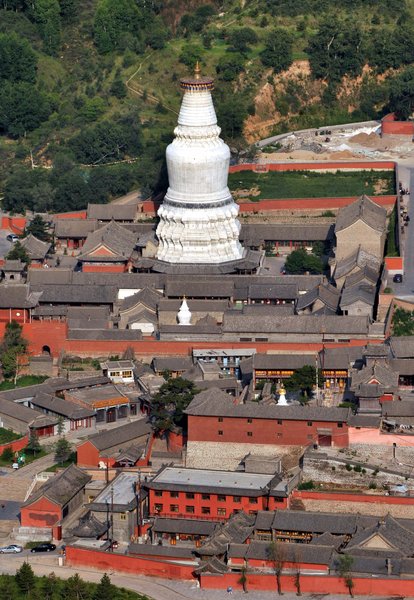
A sacred mountain in China that has been witness to centuries of Buddhist history was added Friday (Beijing Time) to UNESCO's World Heritage List during the 33rd session of the World Heritage Committee in Seville, Spain. [Photo: China Foto Press]
